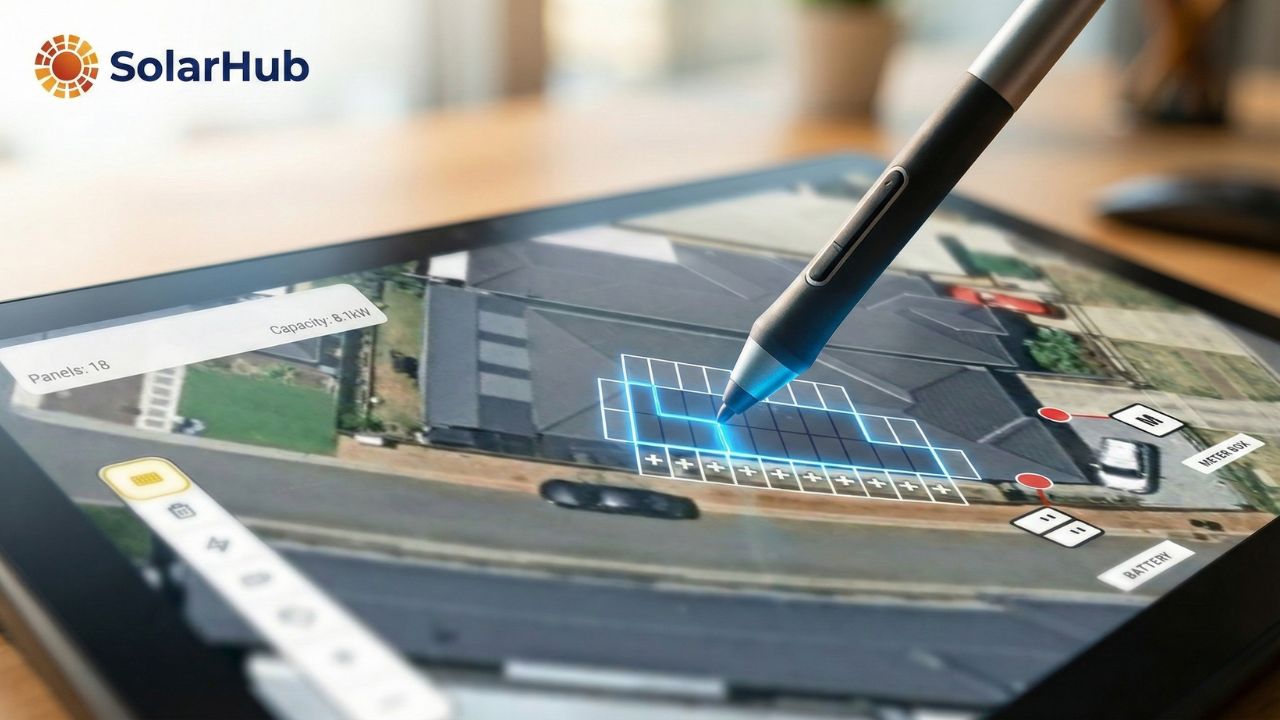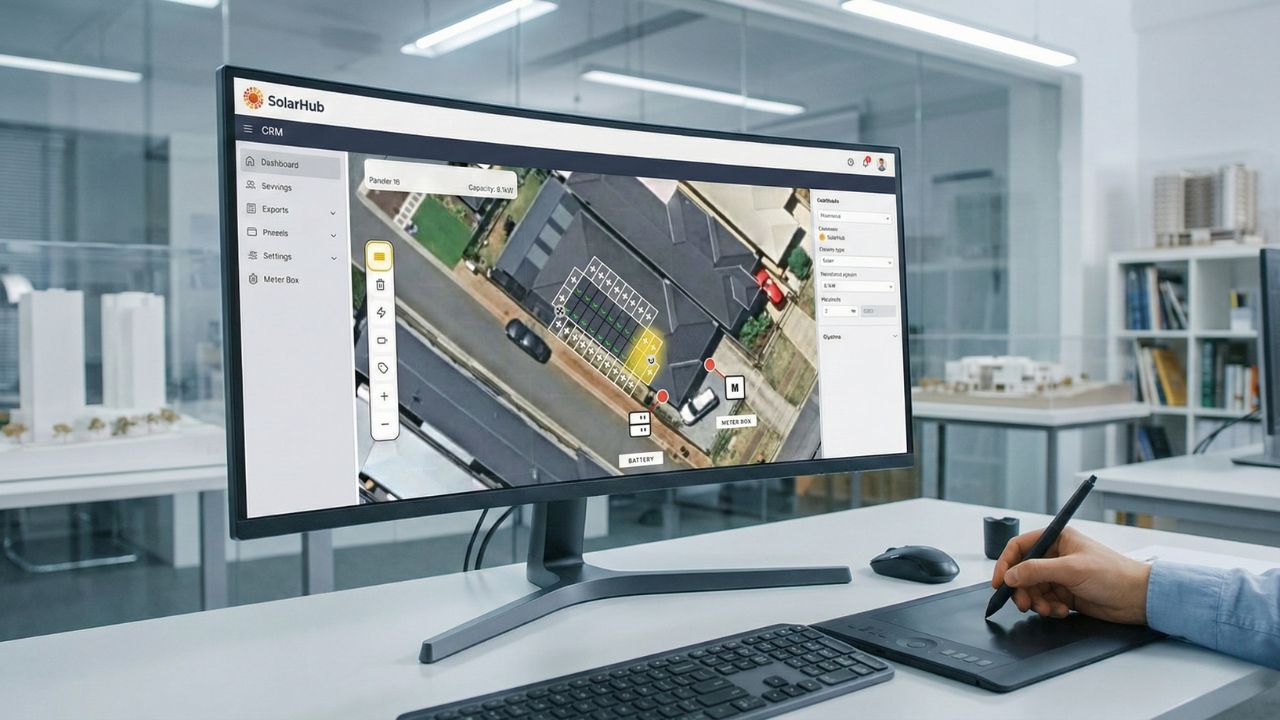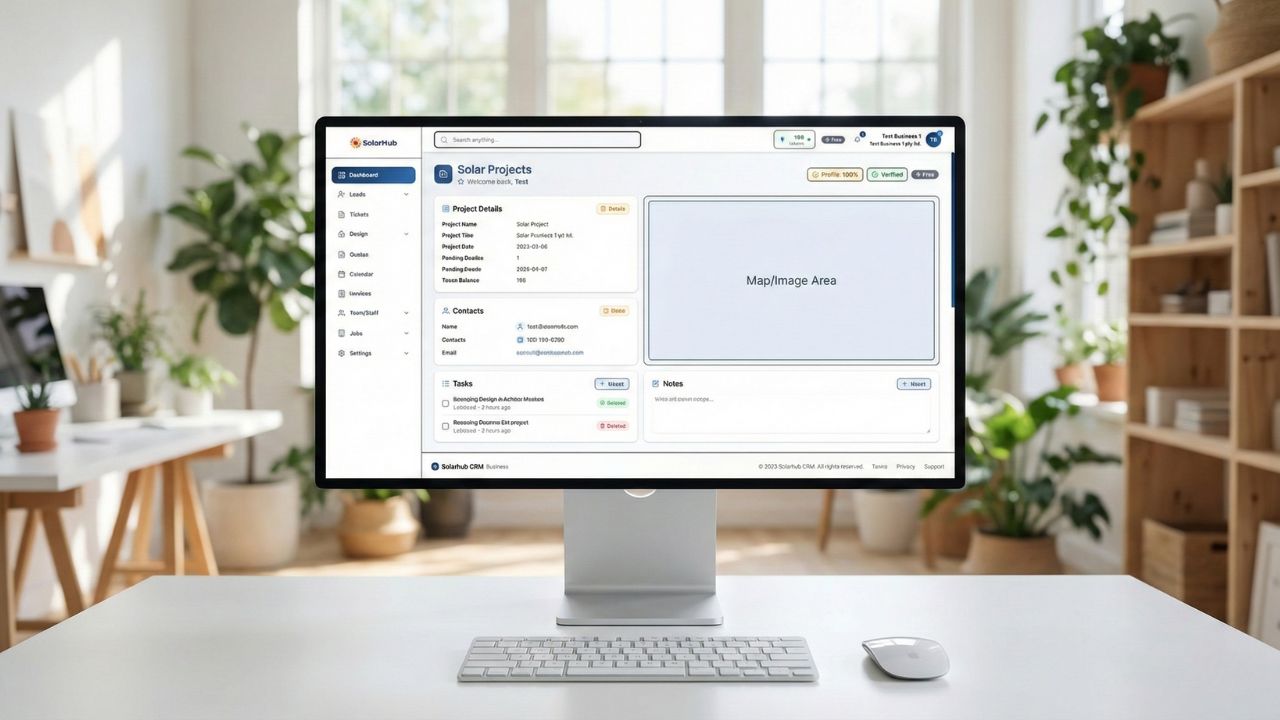Mastering Australian Solar: The Power of Solar System Simulation Software
G'day, fellow innovators and solar enthusiasts! In Australia, the sun isn't just a source of warmth; it's a powerhouse of opportunity. With our abundant solar radiation and a growing commitment to renewable energy, the Australian solar industry is booming. But designing a truly efficient and profitable solar pv system isn't as simple as just placing some solar panels on a roof. It requires precision, foresight, and a deep understanding of complex variables.
That's where solar system simulation software comes in. Forget the days of messy spreadsheets and educated guesses. These powerful digital tools are revolutionising how Australian solar retailers and installers approach system design, predict energy production, and ultimately, deliver superior results for their clients. From a small residential solar system in Perth to a sprawling solar farm in Queensland, the right simulation software is your secret weapon.
At Solarhub, we understand the challenges of running a solar business in Australia. That's why we're dedicated to providing an all-in-one platform that integrates seamlessly with your design needs, transforming your workflow from lead management to project completion. Let's dive into how cutting-edge solar system simulation software can empower your business to shine brighter.
Why Solar System Simulation Software is Essential for Australian Solar Businesses

The Australian climate is unique, boasting some of the highest solar irradiance levels globally, but also presenting challenges like extreme temperatures, cyclonic conditions in some regions, and intricate grid connection rules. Relying on guesswork for solar design simply isn't an option for businesses aiming for long-term success and customer satisfaction.
Precision in System Design and Energy Production Forecasts
At its core, solar system simulation software provides unparalleled accuracy in predicting how a pv system will perform under specific conditions. This isn't just about estimating; it's about detailed analysis. These tools utilise extensive climate data – including solar radiation, temperature, and wind speed – often localised for cities like Sydney, Melbourne, Brisbane, Adelaide, Hobart, and Darwin. By inputting factors like module type, inverter specifications, and array orientation, the software can accurately model expected energy production, helping you determine optimal system kw sizes and predict payback periods. This level of detail is crucial for creating professional solar proposals that instill confidence.
Mitigating Risks and Maximising PV Performance
One of the biggest risks in solar energy projects is underperformance due to unforeseen factors. Solar system simulation software helps mitigate these risks by identifying potential issues before installation. For instance, detailed shading analysis can pinpoint objects (trees, chimneys, neighbouring buildings) that will cast shadows, allowing for optimal panel placement or even a redesign. This proactive approach ensures maximum pv performance and helps avoid costly post-installation adjustments. It's about ensuring every solar cell and module is working at its peak.
Navigating Australian Conditions: Climate Data and Solar Radiation
Australia's diverse geography means that a solar system designed for Hobart might not be ideal for the intense sun of Alice Springs. Top-tier solar system simulation software incorporates granular climate data specific to various Australian locations. This allows for accurate modelling of solar radiation, temperature derating, and even dust accumulation, providing a realistic projection of how a pv system will perform throughout the year. Understanding these localised conditions is paramount for delivering reliable solar energy solutions across the continent.
Key Features to Look for in Top-Tier Solar System Simulation Software
When evaluating solar system simulation software, especially for the demanding Australian market, certain features stand out as non-negotiable for achieving optimal system design and profitability.
- Accurate Shading Analysis: This is critical. Look for software that offers 3D modelling and detailed near-field shading analysis, allowing you to visualise and quantify the impact of obstructions on pv performance.
- Detailed Energy Storage (Battery) Integration: With the rise of solar battery systems and the demand for energy storage, the software should include robust battery calculator functions, modelling charge/discharge cycles, and optimising self-consumption.
- Financial Modelling and System Prices: Beyond technical performance, the best simulation software includes financial analysis, calculating ROI, payback periods, and factoring in solar rebates and feed-in tariffs. This helps you calculate competitive solar system prices for your clients.
- User-Friendly Interface and User Experience: While powerful, the tool should be intuitive. A good interface allows the user to quickly input data, generate reports, and present findings clearly.
- Integration Capabilities: For a seamless workflow, consider software that integrates with CRM systems (like Solarhub!), lead management, and other business tools.
- Access to Localised Data: As mentioned, Australian climate data is vital. Ensure the software has access to reliable, localised meteorological data for accurate simulations.
A Deep Dive into Leading Solar System Simulation Software in Australia
The market for solar system simulation software is diverse, with several key players offering various strengths. Understanding the nuances of each can help Australian solar professionals choose the right tool for their specific user needs.
PVsyst: The Industry Benchmark for PV Performance Laboratories
Often considered the gold standard, PVsyst is a highly detailed and comprehensive simulation software package. It's renowned for its deep technical analysis, precise pv performancemodelling, and extensive component database. PVsyst is particularly valued in performance laboratories and for large-scale commercial solar and solar farmprojects where bankability and rigorous testing are paramount. While it has a steeper learning curve, its detailed reports are widely accepted by financiers and engineers in the australian solar industry. GSES, a leading Australian solar training provider, often highlights its importance in their reviews.
Helioscope: Streamlined Design and Visualisation
Helioscope offers a more visually intuitive approach to solar system design. It excels in rapid layout generation, detailed shading analysis using satellite imagery, and creating compelling proposals with high-quality visualisations. For Australian installers who need to quickly generate accurate designs and present them attractively to clients, Helioscope is an excellent tool. It strikes a balance between ease of using and robust simulations, making it popular for residential and smaller commercial solarprojects.
SolarPlus: The All-in-One Australian Solution

SolarPlus positions itself as the world's most complete solar design software, specifically catering to the needs of the australian solar market. This platform for solar and battery storage design is built to handle everything from residential installations to complex C&I (Commercial & Industrial) infrastructure projects. It's a comprehensive software package that integrates system design, performance analysis, and proposal generation, making it a strong contender for Australian solar businesses looking for a local, integrated solution. Its focus on user needs and the australian electricity market makes it particularly relevant.
Other Noteworthy Tools: SunSPOT, Prophet, PV Lighthouse
- SunSPOT: An excellent, free tool provided by the CSIRO and ARENA, SunSPOT offers a solar and battery calculator for homeowners to estimate system size, cost, and savings. While not a professional design software, it's a great initial tool for consumers and can provide a starting point for discussions.
- Prophet: From IES (Intelligent Energy Systems), Prophet software is widely used for electricity marketmodelling and forecasting in Australia, particularly relevant for understanding the broader impact of renewable energy on the grid.
- PV Lighthouse: Specialises in advanced simulation software for pv solar cells, modules, and power plants, focusing on the fundamental physics of solar cells. Their SunSolve Yield tool, supported by ARENA, aims to further enhance pv performancemodelling.
Comparison of Leading Solar System Simulation Software
| Feature | PVsyst | Helioscope | SolarPlus |
|---|---|---|---|
| Primary Focus | Deep technical & bankable performance analysis | Rapid design & compelling visual proposals | Integrated design, proposal & workflow for AU |
| Shading Analysis | Highly detailed 3D near-field modelling | Excellent satellite imagery-based 3D analysis | Robust 3D shading with Australian context |
| Battery Integration | Comprehensive energy storage modelling | Good, continuously improving capabilities | Strong focus on solar and battery systems |
| Financial Modelling | Detailed economic analysis | Solid, integrated into proposal generation | Comprehensive, tailored for Australian prices & rebates |
| User Experience | Steeper learning curve, highly technical | Intuitive, visual, user-friendly interface | Designed for ease of use by Australian installers |
| Australian Relevance | Global standard, widely accepted in AU | Strong for AU due to rapid design & visuals | Built specifically for the Australian market |
Beyond the Software: Leveraging Data for Australian Solar Success

While powerful solar system simulation software is a game-changer, its true value is unlocked when paired with smart business practices and an understanding of the broader australian solar industry landscape. It's not just about the simulations; it's about what you do with the data.
The Role of Climate Data and Australian Solar Rebates
Accurate climate data is the bedrock of reliable simulations. Institutions like the Bureau of Meteorology and organisations like ARENA (Australian Renewable Energy Agency) provide invaluable data that informs these software systems. Furthermore, staying abreast of solar rebates and incentives, such as Small-scale Technology Certificates (STCs) and various state-based schemes (e.g., NSW solar rebates, Victorian Solar Homes Program), is crucial. The best solar system simulation software should allow you to factor these financial incentives into your system prices and ROI calculations, providing a complete picture for your clients.
Optimising for Commercial Solar and Solar Farm Projects
For larger projects, such as commercial solar installations or even utility-scale solar farms, the complexity escalates. Here, the capability of the simulation software to handle extensive layouts, detailed shading analysis across vast areas, and integration with grid connection requirements becomes paramount. For instance, ARENA's knowledge sharing initiatives highlight the importance of robust modelling for solar farm precommissioning to ensure grid stability and optimal energy production. The right software helps manage the intricacies of these large-scale systems.
Continuous Testing and Performance Monitoring
The journey doesn't end with installation. Ongoing testing and performance monitoring are vital. CSIRO's Solar PV Performance Laboratories, for example, develop technology to accurately test solar panels, contributing to the reliability of Australia's solar energy supply. While simulation software provides upfront predictions, real-world monitoring helps validate those simulations and identify any discrepancies, allowing for continuous improvement in system design and future projects.
How Solarhub Elevates Your Solar Business with Integrated Software Solutions
At Solarhub, we believe that the best solar system simulation software should be part of a larger, integrated ecosystem that simplifies every aspect of your business. We know that Australian solar retailers and installers face unique challenges, from managing leads to generating accurate proposals and scheduling jobs efficiently.
Our all-in-one platform is designed to replace your messy spreadsheets, clunky CRM, and separate design tools with one beautiful, integrated system. Imagine a world where:
- Lead Management is streamlined, allowing you to track and nurture every opportunity, from initial enquiry to signed contract.
- Solar Proposals are generated effortlessly, incorporating precise calculations from your chosen solar system simulation software, creating professional, bankable quotes.
- Email Marketing campaigns are automated, helping you follow up with prospects and maintain customer relationships without missing a beat.
- Job Scheduling and Sales Appointments are managed with ease, thanks to calendar sync and smart allocation rules, ensuring your team is always where they need to be.
- Team Management is simplified with clear roles, permissions, and collaboration features, fostering efficiency across your entire operation.
By integrating the power of advanced solar system simulation software with Solarhub's comprehensive business management platform, you gain a competitive edge. You can design high-performance pv systems with confidence, present compelling proposals, and manage your entire project lifecycle from a single screen. This holistic approach ensures accuracy, boosts efficiency, and drives profitability for your australian solar business, whether you're in Melbourne or Mackay.
Power Your Solar Business with Precision and Efficiency
The Australian solar landscape is dynamic and competitive. To truly excel, you need more than just good intentions; you need intelligent tools that provide precision, efficiency, and a competitive edge. Solar system simulation software is no longer a luxury but a necessity for any serious australian solar business looking to master system design, optimise energy production, and deliver outstanding results for clients across the country.
Imagine replacing the complexity of multiple software packages and manual processes with a single, intuitive platform. At Solarhub, we’ve built that platform. We streamline everything from lead management and professional solar proposals to job scheduling and team collaboration, allowing you to focus on what you do best: bringing clean, renewable energy to Australian homes and businesses. Let us help you integrate the power of leading solar system simulation software into a cohesive, efficient workflow that drives your success.
Ready to transform your solar business? Experience the power of an all-in-one solution that helps you design, manage, and grow. Contact Solarhub today and see the difference!


